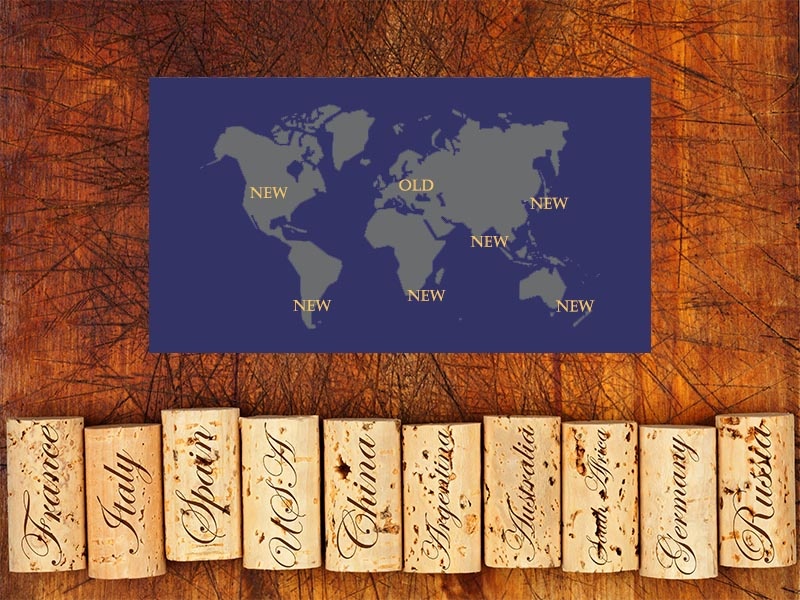Old World Versus New World Wines
- Posted on
- Posted in Old World Wines vs New World Wines
- 0

The terms “Old World” and “New World” are used often in the world of wine to describe different characteristics and styles of wines. The characteristics and styles that are synonymous with these terms are generalizations based on historical precedent, and not on absolutes.
“Old World” is the term used to describe what is considered wines that are traditionally made in Europe. This would encompass France, Italy, Spain, Austria, Hungary, and Germany. This term has been expanded to include Turkey, Georgia, Armenia, and Moldova where winemaking dates back centuries.
On the other side, “New World” is the term used for wines that are made outside of Europe. This includes locations like the United States, Australia, New Zealand, South Africa, Chile, and Argentina. New and emerging wine regions, like China, India and Japan, would also be in this category.
Land and climate play a big factor in what makes “Old World” and “New World” wines different. “Old World” regions tend to be cooler, which ends up with resulting wines that are high in acidity. “New World” regions are warmer. Warmer temperatures yield fruit that is higher in sugar, which gives yeast more to convert to alcohol, so “New World” wines tend to be higher in alcohol than “Old World” wines.
When it is said that “Old World” wines are “traditionally made,” this is often in reference to the fact that many of the countries have regional laws that dictate what grapes can be grown, how the grapes are grown (vine density, yield, etc.), how the grapes are harvested (hand-harvested), how the wine is vinified, how the wine is aged and for how long, and when it can be bottled and sold. “New World” wines are made with fewer rules and restrictions, therefore the winemaking practices vary dramatically, there is more experimentation, and more modern advances are used.
“Old World” wines tend to be lighter, have less alcohol, higher acidity and less fruitiness than their “New World” counterparts. These wines can be elegant, finessed and restrained, with structure and tannins that need time to evolve. “Old World” wines were created over the centuries to pair with food from the region where they made, so they are food-friendly wines.
“New World” wines are normally fruit driven, approachable, riper, rounder and more likely to have smoother tannins than “Old World” wines. Quality wines from the “New World” show a good balance of fruit, structure, alcohol, and feel in your mouth. These wines can be opulent, rich, lush, and dense.
Whether “Old World” or “New World” wines are better is solely up to the individual.

Comments
Be the first to comment...